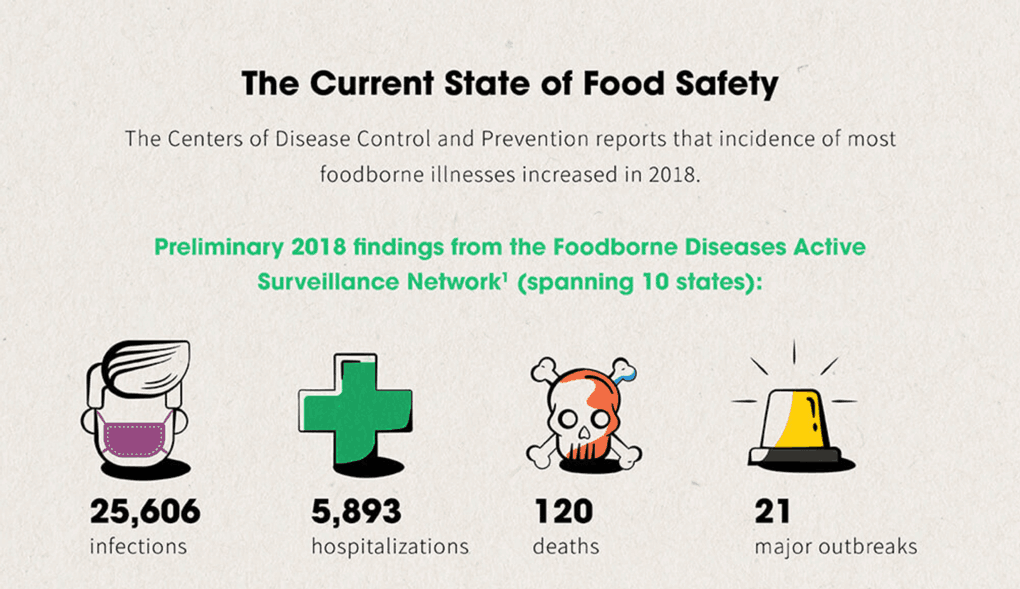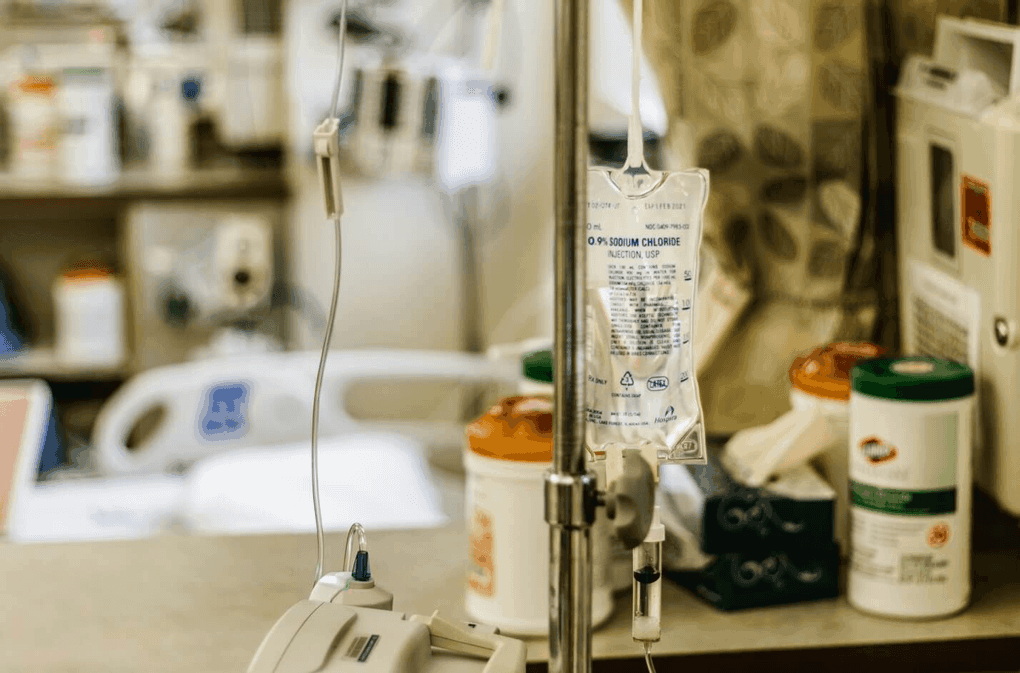Food Safety and Sanitation: Preventing Foodborne Illnesses
Romaine lettuce. Chicken. Ground beef.
If it seems like you've been hearing more news about food recalls and outbreaks, you're not wrong. From salmonella to E. coli, foodborne illness is on the rise.
The Centers for Disease Control and Prevention (CDC), reported a record number of food poisoning incidences in 2018, representative of an ongoing upward trend that shows no signs of slowing. In 2018 alone, the CDC identified more than 25,600 incidences related to foodborne illnesses.

The rise is driven by exposure to the usual suspects — namely salmonella, listeria and E. coli — as well as a 12% spike in incidences of campylobacter, a bacteria often associated with chicken. Notably, incidences related to cyclospora, a parasite usually found in the tropics, jumped by almost 400%.
What is causing this spike in foodborne illness, and most importantly, what steps can companies take to keep consumers safe? The answer lies in food safety measures.
Innovations in food sanitation ensure food safety, helping to prevent outbreaks and identify them when they do happen. Read on to learn more about the integral role that food safety and sanitation play in keeping our food supply safe.
Food Safety Trends
When looking at the current state of food safety, the numbers tell the story. Each year, the CDC's Foodborne Diseases Active Surveillance Network, aka FoodNet, tracks the major sources and trends of foodborne illness across 10 states. If at least two people are affected by the same contaminated food or beverage, it's known as a "foodborne disease outbreak."
Since FoodNet began tracking illnesses in 2006, outbreaks have been on the rise. In 2018, incidences rose sharply, with FoodNet reporting 21 outbreaks resulting in:
- 25,606 food-related infections
- 5,893 hospitalizations
- 120 deaths
When applied to the U.S. as a whole, these numbers translate into one in six Americans experiencing a foodborne illness each year, with almost 128,000 hospitalizations and more than 3,000 deaths.
On a global scale, we see that about 600 million — or one in 10 — people are sickened from contaminated food each year. According to the World Health Organization, unsafe food causes up to 420,000 deaths per year, with 40% of these cases affecting children under age five.
Food safety issues impact the young, the elderly, pregnant women and those with compromised immune systems at a disproportionate rate. On a large scale, foodborne diseases have a negative impact on health care systems, trade and tourism, which in turn can harm national economies.
Foodborne Illnesses and Causes
What causes foodborne illness? Most major outbreaks are caused by contamination from E. coli, salmonella and campylobacter. Other major outbreaks are caused by cyclospora and vibrio.

Photo by Allie Smith on Unsplash
Escherichia coli is among the most common culprits. This bacteria can live in human intestines, and while not all species cause sickness, it can enter the body through contaminated food or water. Major outbreaks in the U.S. have been linked to contaminated foods including ground beef, flour and leafy greens.
Salmonella, another common bacteria, has been linked to outbreaks caused by poultry, tuna, melons, eggs, nuts and spices. In most cases, salmonella symptoms last about a week, but in some cases, it may lead to a serious condition known as enteric fever. Despite continued efforts to fight salmonella, the bacteria's ability to develop resistant strains means that it's proved a difficult pathogen to defeat.
Campylobacter is becoming more common in the U.S. In most cases, this bacteria is found in contaminated poultry, raw milk and untreated water. In most cases, it causes symptoms similar to those caused by E. coli or salmonella, but in rare instances, campylobacter can lead to Guillain-Barré syndrome, an autoimmune disorder.
Illness related to less common pathogens is on the rise. These include cyclospora, a parasite that's normally found in the tropics. Most cyclospora outbreaks were related to produce, and incidences rose by 399% in 2018. Cyclospora infections tend to increase in the summer, which may correspond to an increase in imported produce.
Vibrio contamination also increased by 199% in 2018; this bacteria is found in shellfish. Listeria sickness, while less common, is a leading cause of foodborne illness-related death.
In about 80% of cases, sickness can't be linked to a specific outbreak.
Staying Safe: Preventing Outbreaks
While these numbers may be a cause for concern, there is good news to be found. An increase in reported cases of foodborne illness is an indication of the improved technology that allows researchers and officials to track and identify incidences of infection.
In the laboratory, technological innovations such as genome sequencing help researchers pinpoint how and where infections begin. Along with this improved technology, the CDC recommends several strategic prevention methods. At the food production and harvest level, safe farming practices help stop the problem at its source. Improved quality assurance programs can help ensure that the food reaching consumers is safe.
Food processors can implement vigorous inspection regimes to catch problems. Rigorous testing and quality control will help prevent issues before food reaches the grocery store or the restaurant table.
Fortunately, improved food safety and sanitation technology can help officials identify a common source.
Technology is Changing the Game
While foodborne illnesses are on the rise, the good news is that improvements in technology can help companies protect consumers. Weber Scientific offers a wide range of testing supplies for food, dairy and water.
From sampling supplies to safety supplies, Weber Scientific provides the food safety and sanitation technology and equipment necessary to prevent illness and ensure safety.
As technology continues to improve, companies can take advantage of increasingly effective ways to track and prevent foodborne illnesses. Keeping consumers safe from culprits such as salmonella, E. coli, campylobacter, listeria and other bacteria can help stop sickness before it reaches outbreak level.
Sources
https://newfoodeconomy.org/cdc-foodborne-illness-salmonella-increase/
https://www.cdc.gov/foodsafety/outbreaks/multistate-outbreaks/outbreaks-list.html
https://www.cdc.gov/foodnet/reports/prelim-data-intro-2018.html
https://www.fda.gov/files/food/published/Most-Common-Foodborne-Illnesses-%28PDF%29.pdf